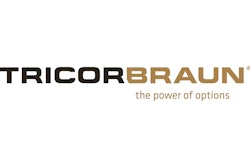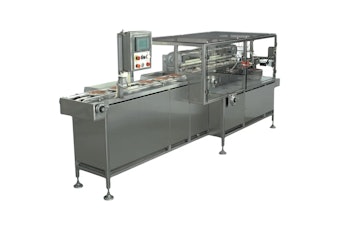
Vitamin and dietary supplement consumers’ package selection decisions are driven by the ease and security of the dispensing close, dosing flexibility and intuitiveness.
Consumers also look for dispensing closures with smaller orifices for controlled dosing, wide orifices for larger pills and gummies, audible clicks to indicate a secure closing, and large thumb recesses for easy, one-handed open and close.
These were among the findings of new research conducted by rigid packaging supplier TricorBraun.
“Marketers are looking to packaging to help deliver innovation and ensure brand loyalty so finding the right packaging solution is imperative to success,” says Becky Donner, the company’s Senior Vice President of Design and Engineering.
Last year, TricorBraun conducted qualitative research to understand consumer behavior and packaging preferences for the vitamin and dietary supplement category. With sales of more than $27 billion in 2016, the vitamin and dietary supplement category is expected to grow at a Compound Annual Growth Rate of 2.8% through 2021, according to “Euromonitor Vitamins and Dietary Supplements in the U.S. 2016.”
“The nutraceutical category is growing, and as consumers take a more proactive approach to health, wellness and preventive care, it will continue to flourish,” says Donner. “Consumer behaviors and lifestyles vary by demographic cohort; many consumers are looking for the fountain of youth, but product format and packaging preferences vary by demographic. We want to better understand these preferences so we can advise our customers on existing stock solutions, and help them develop custom solutions when stock offerings simply will not do the trick.”
TricorBraun conducted in-depth, qualitative focus groups with men and women 25 to 70 years old who take vitamins or supplements on a weekly basis, purchased a portable over-the-counter pain or allergy relief product in the past six months and who have traveled away from home for a minimum of one night as least four times during the past year.
Participants were asked open-ended questions regarding their purchase motivators and product likes/dislikes regarding vitamins and dietary supplements and packaging formats. They were also asked to rate closures based on visual appeal, ease of opening/closing, ease of dispensing and their secure closing impressions.
Consumers on closures
TricorBraun tested four vitamin and supplement packaging closure formats: Hinge Guard, Versa, NutraGen and a not-yet-on-the-market Light Weight closure alternative. Consumer feedback included:
Orifice size
Consumers prefer a wide orifice for larger pills and gummies, such as that found on the new Light Weight alternative, but prefer slightly restricted as in the NutraGen or narrower orifices to help control dosing (especially for tablets and chews).
Open and close ease, secure closings
Testers like large thumb recesses for easy, one-handed open and close, like that found in the Versa and NutraGen formats. Interestingly, they also appreciate the need to unscrew the closure to remove the liner because it confirms the package is intact and has not been tampered.
The extra rings in the Hinge Guard format conveyed an extra secure closing to consumers, but they found the tamper-evident band to be “too much work.” They prefer the audible click indicating a secure closing found in the Versa and NutraGen formats, but also found Versa to be flimsy, causing concerns about closing security.
Sustainable packaging
Sustainability is important to consumers, and they appreciate a Light Weight alternative; however, many consumers expressed concern over the flimsiness of the hinge strength and said they are unwilling to compromise convenience or functionality in the name of sustainability.
Consumers also identified frustration with “overly lightweighted” water bottles as a main reason for not preferring a packaging format that was too light. Consumers said the extra ring that conveyed a secure closing in the Hinge Guard model was extra plastic waste.
Visual appeal
Testers scored the NutraGen format highest for visual appeal while they found the Hinge Guard design to be outdated and unappealing.
“By interviewing consumers and understanding their dispensing closure preferences we can further understand the value of this packaging component,” says Donner. “As we develop new and innovative dispensing closures for this important and growing product category, understanding consumer lifestyle needs and preferences allows us to design and develop in a way that not only meets aesthetic and functional requirements, but also takes operational goals and limitations into account.”

























